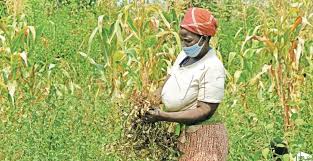The way in which agricultural projects are planned and carried out follows a sequence beginning with an agreed strategy, which leads to an idea for a specific action oriented toward achieving a set of objectives. The project is then formulated, implemented, and evaluated with a view to improving the strategy and further action.
Project Cycle Management (PCM) is an approach to managing agricultural projects. It determines particular phases of the project and outlines specific actions and approaches to be taken within these phases. The PCM approach provides for planning and review processes throughout a cycle, and allows for multiple project cycles to be supported.
The project cycle also provides a structure to ensure that stakeholders are consulted and relevant information is available throughout the life of the agricultural project, so that informed decisions can be made at key stages in the life of a project.
Read Also: Different Breeds of Cattle Characteristics
Meaning of Project Cycle

The way in which projects are planned and carried out follows a sequence that has become known as the project cycle. The cycle starts with the identification of an idea and develops that idea into a working plan that can be implemented and evaluated.
Ideas are identified in the context of an agreed strategy. It provides a structure to ensure that stakeholders are consulted and relevant information is available, so that informed decisions can be made at key stages in the life of a project.
The generic project cycle has six phases: Programming, Identification, Formulation, Financing, Implementation, and Evaluation. The details of what occurs during each phase differ between institutions, reflecting differences in procedures. However, within all institutions, the cycle shares three common themes:
- The cycle defines the key decisions, information requirements, and responsibilities at each phase.
- The phases in the cycle are progressive – each phase needs to be completed for the next to be tackled with success.
- The cycle draws on evaluation to build experience from existing projects into the design of future programmes and projects.
Read Also: Breeds of Sheep: Characteristics, Uses, and Benefits
Phases of the Agricultural Project Cycle

The different phases of the project cycle can be described as follows:
1. Programming Phase: During the programming phase, the situation at national and sectoral level is analysed to identify problems, constraints, and opportunities which development cooperation could address. This involves a review of socio-economic indicators, and of national and donor priorities.
The purpose is to identify and agree the main objectives and sectoral priorities for agricultural development cooperation, and thus to provide a relevant and feasible programming framework within which projects can be identified and prepared. For each of these priorities, strategies will be formulated that take account of the lessons of past experience.
2. Identification Phase: During the identification phase, ideas for projects and other development actions are identified and screened for further study. This involves consultation with the intended beneficiaries of each action, an analysis of the problems they face, and the identification of options to address these problems.
A decision can then be made on the relevance of each project idea (both to the intended beneficiaries and to the programming framework), and on which ideas should be further studied during the formulation phase.
3. Formulation Phase: During the formulation phase, relevant project ideas are developed into operational project plans. Beneficiaries and other stakeholders participate in the detailed specification of the project idea, which is then assessed for its feasibility (whether it is likely to succeed) and sustainability (whether it is likely to generate long-term benefits for the beneficiaries).
Based on this assessment, a decision is made on whether to draw up a formal project proposal and seek funding for the project.
4. Financing Phase: During the financing phase, project proposals are examined by the funding agency, and a decision is made on whether to fund the project. The funding agency and partner country agree on the modalities of implementation and formalise these in a legal document, which sets out the arrangements by which the project will be funded and implemented.
5. Implementation Phase: During the implementation phase, the project is mobilised and executed. This may require the tendering and award of contracts for technical assistance or works and supplies. During implementation, and in consultation with beneficiaries and stakeholders, project management assesses actual progress against planned progress to determine whether the project is on track toward achieving its objectives.
If necessary, the project is re-oriented to bring it back on track, or to modify some of its objectives in the light of any significant changes that may have occurred since its formulation.
6. Evaluation Phase: During the evaluation phase, the funding agency and partner country assess the project to identify what has been achieved, and to identify lessons that have been learned. Evaluation findings are used to improve the design of future projects or programmes.
Although, in the generic cycle, the evaluation phase comes after implementation, it is common practice also to conduct a mid-term evaluation during implementation, to identify lessons that can be applied during the remaining life of the project.
Do you have any questions, suggestions, or contributions? If so, please feel free to use the comment box below to share your thoughts. We also encourage you to kindly share this information with others who might benefit from it. Since we can’t reach everyone at once, we truly appreciate your help in spreading the word. Thank you so much for your support and for sharing!
Read Also: Benefits And Importance Of Fitness To Your Health






